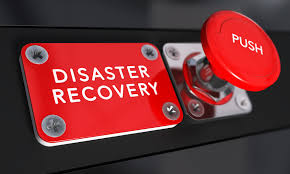When it comes to assessing whether your organization has an effective plan in place for recovering from unexpected events that could impede operations, it’s essential to have internal stakeholders and auditors weight in on your plan. In order for your organization to recover from incidents like tornadoes, hurricanes, floods and other natural disasters your team will want to identify your organization’s critical assets, the length of downtime that’s acceptable depending on the severity of the situation and which systems are a priority to restore before others.
 It’s a fact that organizations change daily. As a result, your disaster recovery plan should be updated regularly to account for those changes. This is where Clarus Communications can help. We can continuously monitor your organization to ensure your disaster recovery plan is up to date and will be effective when implemented.
It’s a fact that organizations change daily. As a result, your disaster recovery plan should be updated regularly to account for those changes. This is where Clarus Communications can help. We can continuously monitor your organization to ensure your disaster recovery plan is up to date and will be effective when implemented.
Anyone can access templates available on the web as a starting point to develop your organization’s disaster recovery plan. But having a partner like Clarus Communications to monitor your organization’s existing environment to ensure you have the necessary requirements in the event of a disaster will save your company thousands of dollars in the long run.
Clarus Communications evaluates disaster recovery plans for all sorts of organizations. We make sure senior management and various departments and personnel within your organization support the efforts to implement a disaster recovery plan.
We work with your organization to form a disaster recovery plan committee. Such a committee is comprised of the heads of each department within your organization so that all stakeholders are prepared and know their part should disaster strike. Everyone on the committee takes part in the design and implementation of the plan. Ideally, a disaster recovery plan committee member should be chosen to ensure plan implementation. Similar to a project manager, this person is responsible for all aspects of the project.
Once the committee is in place, work begins on identifying your organization’s critical assets and what they consider as an acceptable downtime (loss of use) of these assets. Clarus Communications can help your organization calculate the cost of the recovery. We’ll help you with backup sites and how to classify each as hot, warm or cold. A hot backup site is one that’s nearly a duplicate of your organization’s existing site, with duplicate data from the original site and full computer systems. This is expensive to maintain which is why many organizations opt for warm and cold sites. A warm backup site has some of a hot site’s features but not all and is less expensive to maintain with recent backup storage options, some cabling, and minimal hardware. The least expensive option is a cold backup site because it takes the longest time to bring everything back online in a recovery situation, with limited cabling and right to use space in a designated facility. Your disaster recovery plan committee will have to determine the facilities, network, communication lines, supplies and hardware it can afford as well as the ease of recovery it needs.
In “Words Of Advise For Your Disaster Recovery Plan – Part II,” we’ll discuss more about backups, network configuration, disaster recovery implementation, writing up and updating your plan, testing your plan and training.
Clarus Communications is a leading, national provider of telecommunications technology. Clarus specializes in providing over 60 telecom provider options to businesses that need dependable, scalable and innovative technology solutions. Since 2001, Clarus Communications has been successfully helping clients make the best decisions regarding their phone service, phone systems, wireless and data needs. Please click here or call us at 855-801-6700 to speak with one of our knowledgeable staff so we can work with you on finding the right service for your business at the most affordable rates.

